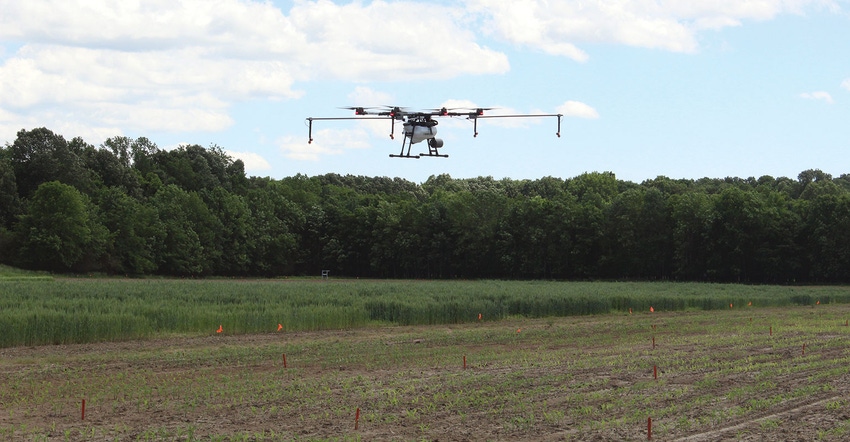
The business model for drone company Rantizo is designed to address farm labor problems many farmers face by working with and training them to implement autonomous drone spraying on their operations, and the benefits are tangible and surprising.
When Michael Ott, president and CEO, Rantizo, was asked what the most significant accomplishment has been over the last several years with drone technology, his answer was immediate. “Without question, reliability of in-flight directional control,” Ott says. “When we started this business two years ago, drones would fly where you intended them to fly about half of the time and they were controlled manually. Today, they fly their intended flight path with 99.9 percent accuracy and can be flown autonomously.”
Like any new start-up business, a market had to be identified and targeted. “We are the first drone company to be fully-licensed in 10 states, including the Mid-South states of Missouri and Louisiana,” Ott says. “We have been applying granular fertilizers and cover crop seeds, pollen and beneficial insects.”
Limits and qualifications
One concern some farmers have expressed about using a drone is its inability to carry an appreciable payload. “Our drone system can cover 100 acres per-day at 3 gallons per acre. Our current capacity is 2.7 gallons of product because the Federal Aviation Administration places a 55-pound use weight limit on Part 107 licensed operators,” Ott says.
“A payload above that weight requires an official private pilot license. We are well aware of the labor shortage problem many farms face these days, so we wanted to make the required training less onerous. Today, we can train anyone in a few days to a few weeks.”
A typical application flight will cover an acre of ground. Aerial imagery may be integrated into the system to make flight prescriptions which would reduce inputs.
“Having that aerial imagery shapefile containing GPS locations will allow a prescription to be made so the drone will spray only those infested areas. It will also reduce soil compaction and reduce drift,” Ott says. “Drones can make an application much sooner after a rain while the field may still be too wet for a ground rig. If you’re spraying a two- or three-leaf stage crop versus a seven- or eight-leaf stage, you’ll be able to use less chemical and get more efficacy from the application.”
To be eligible to fly a drone for spraying purposes in the United States, you must have a Part 137 certificate from the FAA, be certificated under Part 107 as a drone remote pilot and hold a chemical applicator license in the state you are spraying.
“State requirements for a chemical applicator license vary, but the Part 107 license is easy to obtain by studying online and taking a test at your local FAA office,” Ott says.
The future
As Ott and his staff continue moving their business model forward with assistance from the AgLaunch Program, they are working on making the various parts of the drone/spray system communicate more effectively. “There are multiple moving parts to this system and they each must work together, and that’s what we’re working on currently,” Ott says.”
Moving into the future, drones will be used in many more business applications yet to even be considered currently.
“It is very exciting to be part of the drone business as we work to build drone use in agriculture. In the not-too-distant future, I foresee multiple autonomous swarms of drones being used on farms across the country working together to improve crop yields while lowering the use of inputs and reducing costs,” Ott said.
About the Author(s)
You May Also Like




